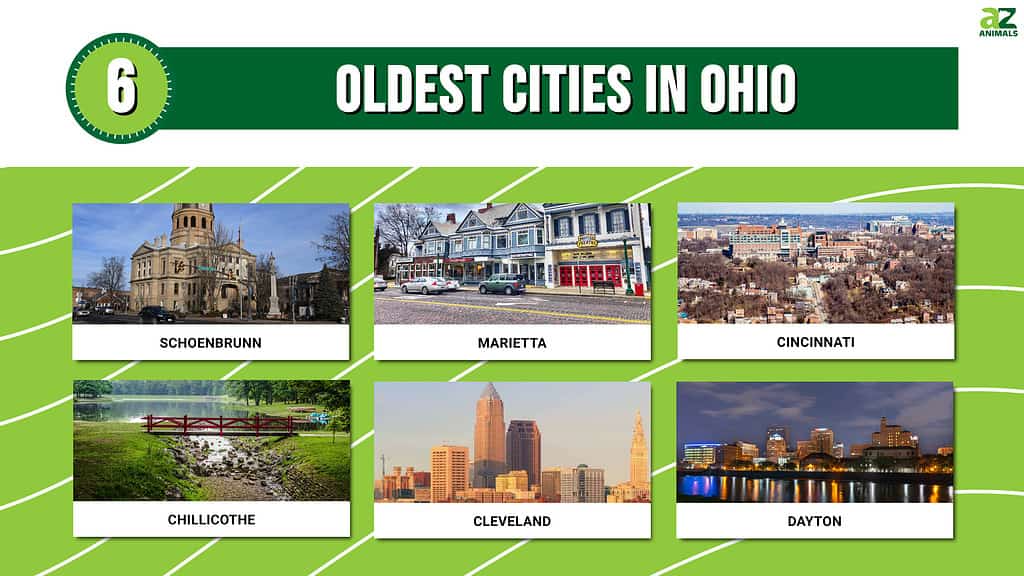
Native Americans originally inhabited the land that constitutes the state of Ohio. These indigenous tribes included the Shawnee in the south, Lanape in the east, Myaamia in the west, Seneca-Cayuga in the central and northwest regions, Wyandot in the north, and Ottawa in the northeast. French missionaries first encountered these tribes in the 17th and early 18th centuries.
Ohio would come under British control in 1754 after the French and Indian War. When the American Revolution ended, Britain ceded control of the territory to a new nation, the United States of America.
Ohio became the 17th of the Union, achieving statehood on March 1, 1803.
The history of Ohio is fascinating, as is the history of its oldest cities. Here is a bit of the backstory behind some of the oldest towns in the Buckeye State, along with what they offer to residents and visitors today.

Ohio has a storied history, as seen through some of its oldest cities.
©iStock.com/gustavofrazao
1. Schoenbrunn, 1772
While no longer in existence, no discussion of Ohio’s oldest cities would be complete without mention of the first “city” in the region.
The initial Ohio settlement in the early U.S. westward expansion was Schoenbrunn Village. Moravian missionaries who lived at peace with local indigenous peoples founded it. This village featured Ohio’s first settlement, school, church, and written civil code.
This small settlement only lasted five years, though. It was situated directly in the crossfire of conflicts between Native peoples and American frontiersmen. In 1777, the village was abandoned.
You can visit a historical museum complex that has been restored to the original 16th-century look and feel of this village in New Philadelphia, Ohio.
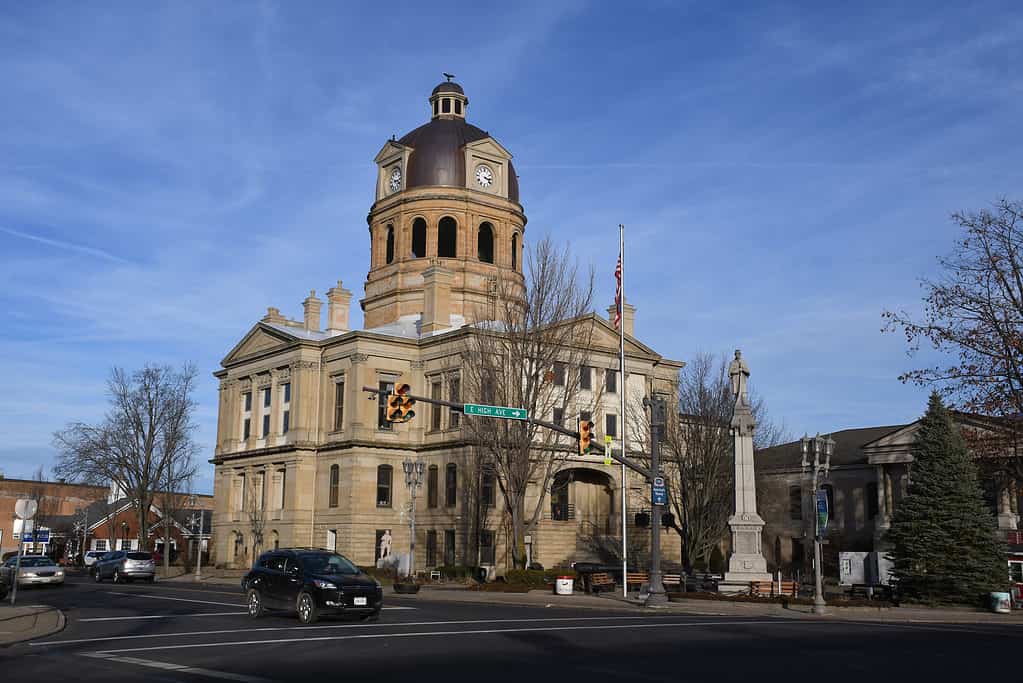
New Philadelphia is located in east-central Ohio.
©BLAZE Pro/Shutterstock.com
2. Marietta, 1788
Marietta holds the title of Ohio’s oldest city. It was the first permanent United States settlement north and west of the Ohio River. The settlement’s original name was Adelphia, but it would later be renamed Marietta after France’s Queen Marie Antoinette. This was done in honor of France’s invaluable aid to the U.S. colonies during the American Revolution.
Marietta’s original settlers came mostly from New England. However, people moving from Kentucky and Virginia later joined them.
Arthur St. Clair, the first governor of the Northwest Territory, visited Marietta on July 9, 1788. The settlement was officially established, as was Washington County with Marietta as the county seat.
Agriculture boomed, with large farms and apple orchards appearing across the landscape. Its location at the confluence of the Muskingum and Ohio Rivers also brought rapid growth to Marietta through shipping and the steamboat-building industry. This earned Marietta the nickname “Riverboat Town.”
Marietta’s growth would later be stunted by the construction of canals, the National Road, and, perhaps most importantly, the railroad system. This made large portions of Ohio far more accessible, and other cities outpaced Marietta’s growth. But Marietta’s place in Ohio history was already cemented.
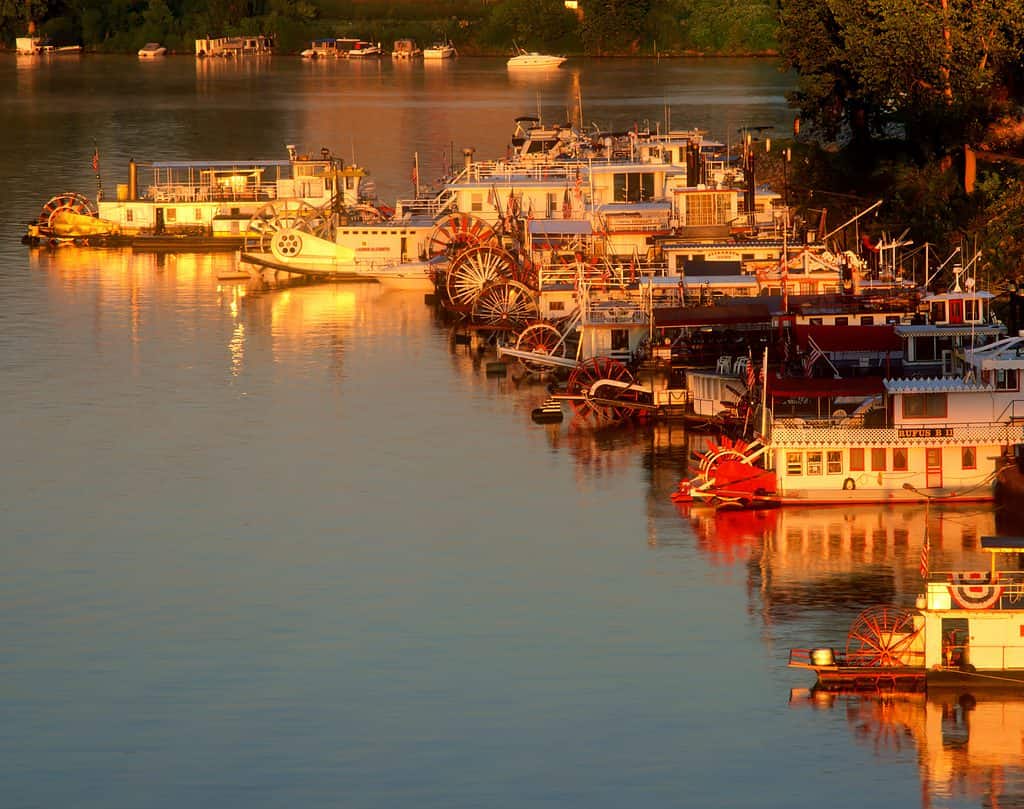
Marietta, Ohio, came to be known as “Riverboat Town.”
©iStock.com/LarryKnupp
Marietta Today
Today, Marietta is home to more than 13,000 residents. This history of the city is prominently displayed in numerous historic buildings and homes, along with multiple museums, including Campus Martius Museum, The Castle, and the Ohio River Museum.
Downtown Marietta features Victorian-style buildings, small shops, boutiques, taverns, and restaurants. It’s a delightful place to spend the day strolling, shopping, and just taking in the historical vibe of this small Ohio city.
Countless outdoor activities are available, thanks to the city’s proximity to the rivers as well as Wayne National Forest. Fishing, boating, hiking, mountain biking, and ATV trails all abound in greater Marietta. And no visit to “Riverboat Town” would be complete without a ride aboard a historic Sternwheeler.
Marietta may not be the biggest or most well-known city in the state, but it is a lovely town. Its warm, welcoming inhabitants would love to introduce you to Ohio’s oldest city!
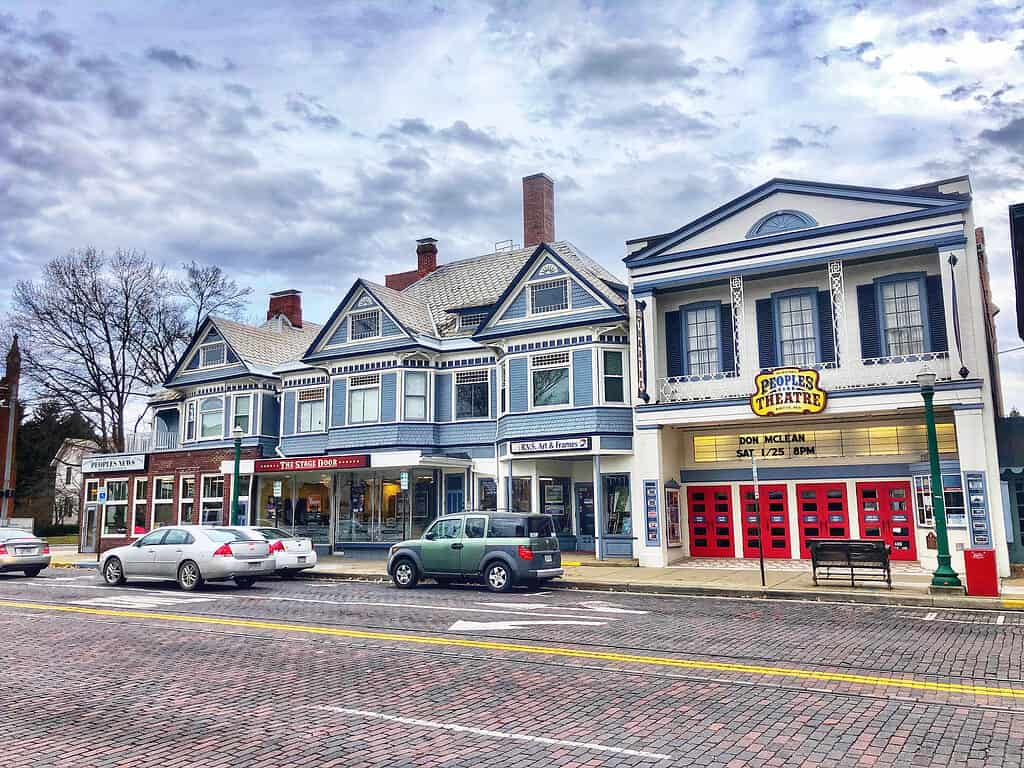
Historic downtown Marietta is like a snapshot of times gone by.
©iStock.com/Wendy Van
3. Cincinnati, 1788
The Queen City had a small and rather inauspicious beginning. In 1788, settlers named Matthias Denman, Robert Patterson, and Israel Ludlow purchased 800 acres from John Cleves Symmes, where the Licking and Ohio Rivers meet. These three men would plot out a town named Losantiville.
In 1789, Fort Washington was constructed to protect settlers in Losantiville as well as northern Kentucky. There were around 300 soldiers at the fort, bringing the population of Losantiville to around 500 total.
A New Name
The following year, Arthur St. Clair, governor of the Northwest Territory, established Hamilton County and named Losantiville the county seat. The governor disliked the town’s name, though. He changed the name to Cincinnati after the ancient Roman soldier Lucius Quinctius Cincinnatus. It was also meant to recognize the Society of Cincinnati, of which St. Clair was a member. The Society of Cincinnati began as an association of Continental Army officers after the conclusion of the Revolutionary War, and it remains active to this day.
By the mid-1800s, Cincinnati had grown into a major city, thanks in large part to its prime location along the Ohio River and the introduction of steamboats. The Ohio & Erie Canal made traveling from western Ohio to Cincinnati much more efficient for merchants, as well as farmers who brought crops to Cincinnati for shipping. Barges and steamships carried goods from Cincinnati down the Ohio and Mississippi Rivers to New Orleans.
This is also when Cincinnati became a meat-processing hub. Along with their crops, farmers brought livestock to Cincinnati where it was processed and sold to settlers or shipped to other markets. Cincinnati became known as the capital of pork production in the nation, earning it the nickname “Porkopolis.” This historical heritage is still present in Cincinnati today, including the city’s annual race known as “The Flying Pig Marathon.”
The Way to Freedom
Cincinnati’s strategic location also made it a critical hub for the Underground Railroad in the years leading up to the American Civil War. This Ohio city bordered Kentucky, a slaveholding state. Cincinnati became a critical hub for the Underground Railroad. Some have even dubbed it the Underground Railroad’s “Grand Central Station.” The Ohio River crossing from Kentucky to Cincinnati became the most heavily traveled route of the Underground Railroad. Some 30,000 people crossed the river and escaped slavery through the city’s abolitionist network.
While most escaped slaves kept traveling north, some chose to stay in Cincinnati. This led to conflicts with white Cincinnatians who were not in favor of slavery’s abolition. In 1834, the “Great Lane Debates” regarding slavery were held at Cincinnati’s Lane Theological Seminary. These debates have been credited with helping to shape PresidenLincoln’sm Lincoln’s policy on slavery, leading to the President’s signing of the Emancipation Proclamation on January 1, 1863.
Cincinnati honored this heritage with the opening of the National Underground Railroad Freedom Center in 2004.
By the end of the 19th century, Cincinnati was the largest city in Ohio, with a population of over 300,000 residents. This also made Cincinnati the most densely populated city in the United States at the time.
The population of Cincinnati remained more-or-less constant from then until now, with the latest census showing a population within the city of nearly 309,000. The greater Cincinnati metro, however, is home to well over two million people.

The National Underground Railroad Freedom Center honors Cincinnati’s history as the gateway to freedom for escaped slaves.
©Rosamar/Shutterstock.com
Four Presidents
America’sOhio is sometimes referred t” as the “Mother of Presidents,” since eight of America’s 46 presidents have come from the Buckeye State. Four of those eight were from greater Cincinnati.
William Henry Harrison was from North Bend, Ohio, a western suburb of Cincinnati, as was his grandson, Benjamin Harrison. William Henry Harrison is buried in North Bend.
Ulysses S. Grant was born along the banks of the Ohio River in Point Pleasant, Ohio, and spent part of his childhood in Georgetown, Ohio. Both towns are southeast of Cincinnati.
William Howard Taft was born and raised in Cincinnati. His childhood home in Cincinnati is a National Historic Site and is operated by the National Park Service. The history of this city runs far deeper than many people realize.
Cincinnati Today
Today, Cincinnati is experiencing a revitalization. Downtown, as well as neighborhoods throughout the city, have experienced a boom in trendy new restaurants and breweries. The arts scene in Cincinnati has experienced a renaissance. The Cincinnati Museum Center at Union Terminal features multiple museums in an art deco train station that is a National Historic Landmark. The Cincinnati Zoo and Botanical Garden is consistently ranked as one of the top zoos in the U.S. The city is home to the University of Cincinnati, the second-largest university in the state. It boasts four professional sports teams: the Cincinnati Bengals, Cincinnati Reds, F.C. Cincinnati, and Cincinnati Cyclones.
If you thought Cincinnati was just about chili, there’s way more to this historic town than that (although the chili is pretty awesome, too!).

Cincinnati’s renaissance continues to make it a vibrant culture in the Midwest.
©iStock.com/RudyBalasko
4. Chillicothe, 1796
“Chillicothe” was originally the name of a clan within the indigenous Shawnee people. Therefore, the leader of the Shawnee tribe could only come from this one specific clan.
The Shawnee people would name a village “Chillicothe” when their principal leader resided there. In the Shawnee language, the word Chillicothe means “principal town.”
When the current Shawnee leader died, a new Shawnee leader would be selected, and the Shawnee capital would be relocated to the home of that leader. Thus, the new village would then be renamed “Chillicothe.” So, there have been several villages known as “Chillicothe” throughout Ohio’s history. Ohio’s
Interestingly, the modern-day Ohio city of Chillicothe was never a Shawnee village, although there was a Shawnee “Chillicothe” village just three miles north of its location.
The Chillicothe that we know today was born when Nathaniel Massie created plans for the town in 1796. Ross County was incorporated two years later, and Chillicothe was named the county seat.
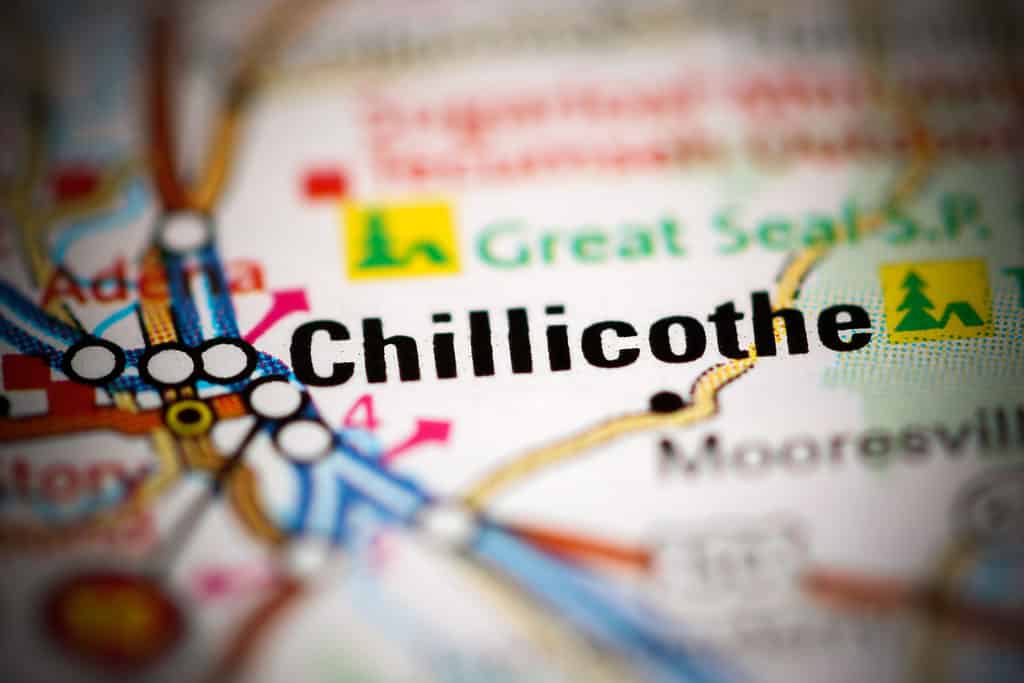
Chillicothe is located in south-central Ohio, 45 minutes south of Columbus.
©SevenMaps/Shutterstock.com
Ohio’s Capital
Chillicothe’s political prominence continued to grow, and in 1802, as Ohio was approaching statehood, the Ohio Constitutional Convention was hosted in Chillicothe. The city then became Ohio’s first state capital. Chillicothe would remain Ohio’s capital until 1810, when the capital was moved to Zanesville. Two years later, the capital was moved back to Chillicothe. Four years after that, in 1816, Ohio’s capital city would move 45 miles north to Columbus, which remains the state capital to this day.
The 19th century saw considerable economic growth in Chillicothe. Agriculture was the main cog in the economic wheel, but other industries, most notably papermaking, supplemented it. Daniel Mead established the Mead Corporation in Chillicothe in 1890. Though no longer affiliated with Mead, an integrated paper mill is still operating in Chillicothe today.
World War I dramatically changed the growth and trajectory of Chillicothe. In 1917, the federal government established Camp Sherman just outside of the city. With lightning speed, more than 2,000 buildings were constructed to house soldiers training for deployment in “The Great War.” With the influx of these “Doughboys,” Chillicothe’s population ballooned from 16,000 to 60,000, almost in the blink of an eye. The need for civil and commercial services to accommodate the population boom meant more jobs and even more people moving to Chillicothe.Chillicothe’s
U.S.Camp Sherman was permanently closed and dismantled in the 1920s. None of the original buildings remain, though the U.S. government still owns the land. A Veterans Administration medical center was established on the grounds.

Chillicothe is nestled in a lovely area of Ohio, with Scioto Trail State Park nearby.
©iStock.com/ehrlif
Chillicothe Today
Today, Chillicothe is still an industrious town, with truck and paper manufacturing leading the way. It is also a wonderful place to visit. The historic buildings of the downtown area house over 30 local shops and restaurants.
“The outdoor drama”Tecumseh!” is featured every summer at the Sugarloaf Mountain Amphitheatre in Chillicothe. This production has achieved worldwide acclaim for its portrayal of the legendary Shawnee warrior and leader. Well over three million people have been witness to this iconic Ohio drama.
Hopewell Culture National Historic Park also resides in Chillicothe. It commemorates and honors the earthworks built by American Indians some 2,000 years ago. You can walk through these mounds and earthen enclosures that were used for feasts, funerals, and rituals of the indigenous people of Ohio.
This Ohio town has a blend of industry and history all its own.
5. Cleveland, 1796
Cleveland was founded by the Connecticut Land Company in the Connecticut Western Reserve. It was named after General Moses Cleaveland, who was an investor in the company and who led the survey of the land that would later become Cleveland. The city was known as Cleaveland until 1831 when the Cleveland Advertiser newspaper dropped the “a.” Removing the letter from the paper’s nameplate was most likely a simple cost-cutting measure, but it led to the modern spelling that is used today.
After the first survey of Cleveland in 1796, the Connecticut Land Company charged $50 per lot for people to settle in the new town. There were very few takers. Four years later, only seven people lived in Cleveland. Ten years after that, there were less than 60 people in the town. Twenty-five years after its inception, there were still only around 600 Cleveland residents.
But the mid-1800s brought amazing changes to the city and its populace, such as a free bridge over the Cuyahoga River. The Erie Canal connected Cleveland with the Atlantic Ocean. The Ohio & Erie Canal also connected Lake Erie with the Ohio River.
The advent of the steamboat provided transportation and shipping lanes on Lake Erie. And in the 1850s, the railroads arrived in Cleveland.
With all the transportation and shipping options now available, a whole new way of life was now possible for Clevelanders. The population of the city exploded from under 1,000 to more than 40,000 in less than four decades.
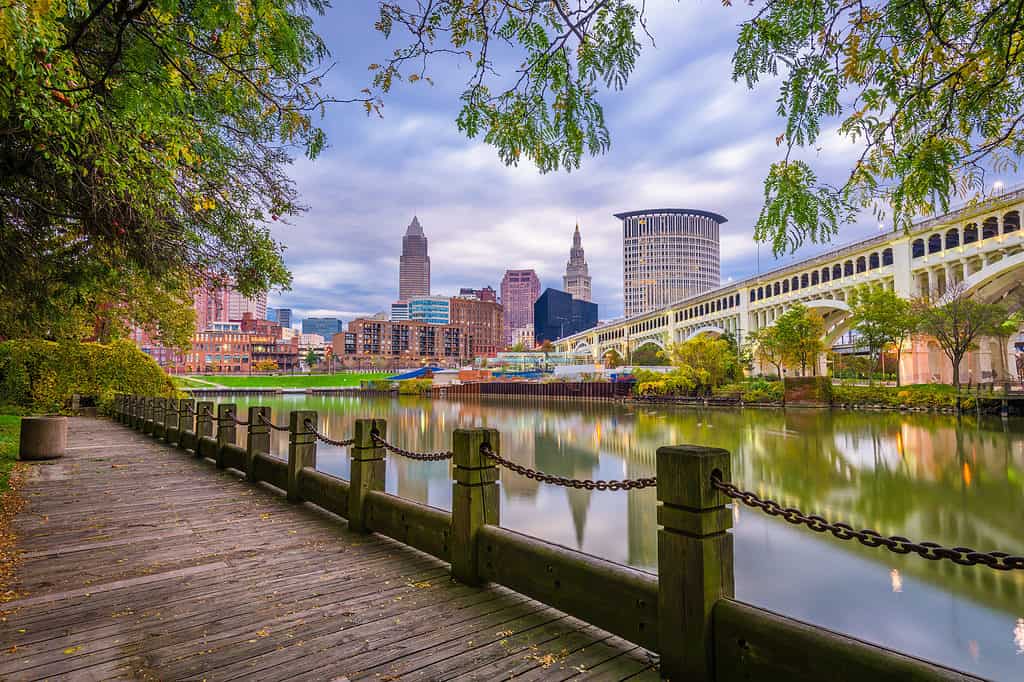
Cleveland’s location on the Cuyahoga River would be central to its growth.
©iStock.com/Sean Pavone
Presidential History
It was also during this time period that James A. Garfield was born in Orange Township (modern-day Moreland Hills), just east of Cleveland, in 1831. He would go on to serve as president of Hiram College, now a short 45-minute drive southeast of Cleveland, along with serving as a minister in local churches. Garfield would then serve nine terms in Congress and as a military general before becoming the 20th President of the United States. He is known as the last of the log cabin presidents. His Presidency lasted only 200 days, though, as his life was cut short by an assassin’s bullet. President Garfield’s body would lie in state at Cleveland’s Public Square in 1881. But he was not the first president to be so honored in this space.
A bit more Cleveland presidential history: on February 15-16, 1861, then president-elect Abraham Lincoln stopped in Cleveland on his way to Washington, DC. Mr. Lincoln stayed at the Weddell House, Cleveland’s most well-known hotel. He addressed a crowd from the hotel’s balcony, urging listeners to support the continued Union of the states.
Four years later, on April 28, 1865, President Lincoln’s body would lie in state at Cleveland’s Public Square. Cleveland was one of the stops on the 1,700-mile rail journey to Springfield, Illinois, where Lincoln’s body would be buried less than a week later on May 4.
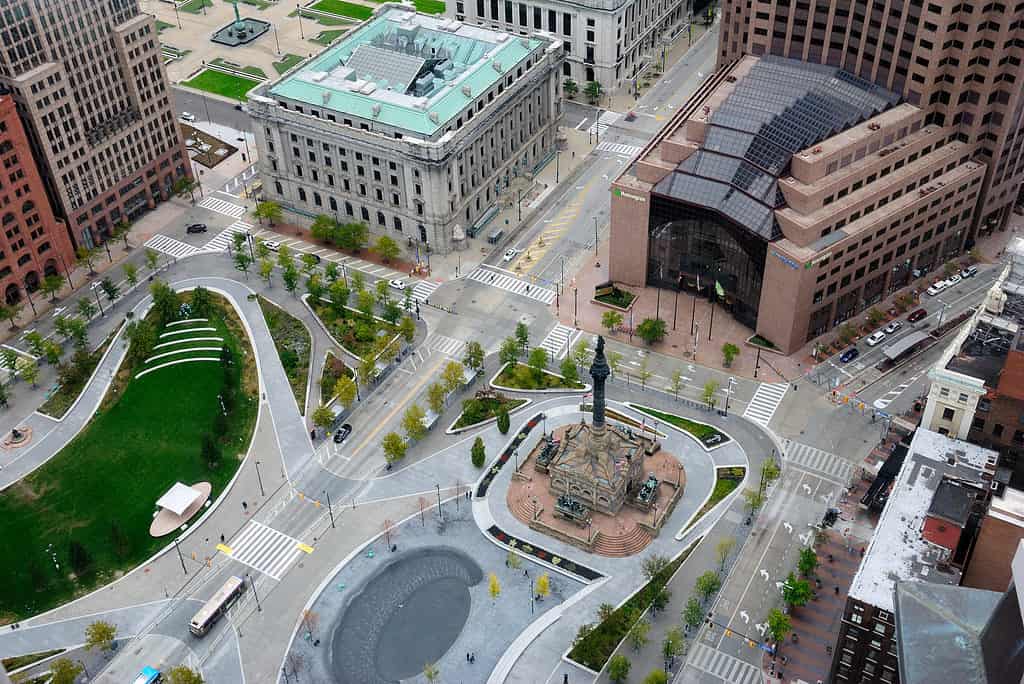
Cleveland’s Public Square has seen many historic moments.
©Nina Alizada/Shutterstock.com
Cleveland’s Industry
Through the mid-late 1800s, industry and jobs were opening up in Cleveland like never before. Iron manufacturing started with the Cuyahoga Steam Furnace Company. In the 1860s, John D. Rockefeller started the Standard Oil Company in Cleveland, while Samuel Mather introduced steel production to the city. By the late 1800s, nearly 30% of the city’s workers labored in steel mills.
By 1880, Cleveland’s population was 160,146, making it the 12th largest city in the nation. Ten years later, the population jumped to over 261,000, placing Cleveland in the top ten largest U.S. cities. And by 1920, Clevelanders numbered close to 800,000, making the city the fifth largest in the country. The population would peak in 1950 at 914,808 before starting years of decline. Today, Cleveland is home to 372,624 people, though over 2 million live in the Cleveland-Elyria metropolitan area.
Cleveland Today
The city experienced some tough days through the mid-late 20th century, but Cleveland is now a city on the rise. Today, Cleveland is home to a vibrant culture. Downtown and its surrounding neighborhoods are abuzz with restaurants and bars. But, of course, you’re never far away from a pierogi in Cleveland!
The Cleveland Metroparks Zoo is a top-rated attraction in the city. You can also head to the roller coaster capital of the world, Cedar Point.
Cleveland is home to four professional sports teams: the Cleveland Browns, Cleveland Guardians, Cleveland Cavaliers, and Cleveland Monsters.
The city is also home to the Rock and Roll Hall of Fame, which opened in 1995. But this town’s history as the “Home of Rock and Roll” dates back further than that. Cleveland hosted the nation’s first rock concert in 1952 when Paul Williams and the Hucklebuckers and Tony Grimes and the Rockin’ Highlanders played at the Cleveland Arena.
No doubt about it. Cleveland rocks!
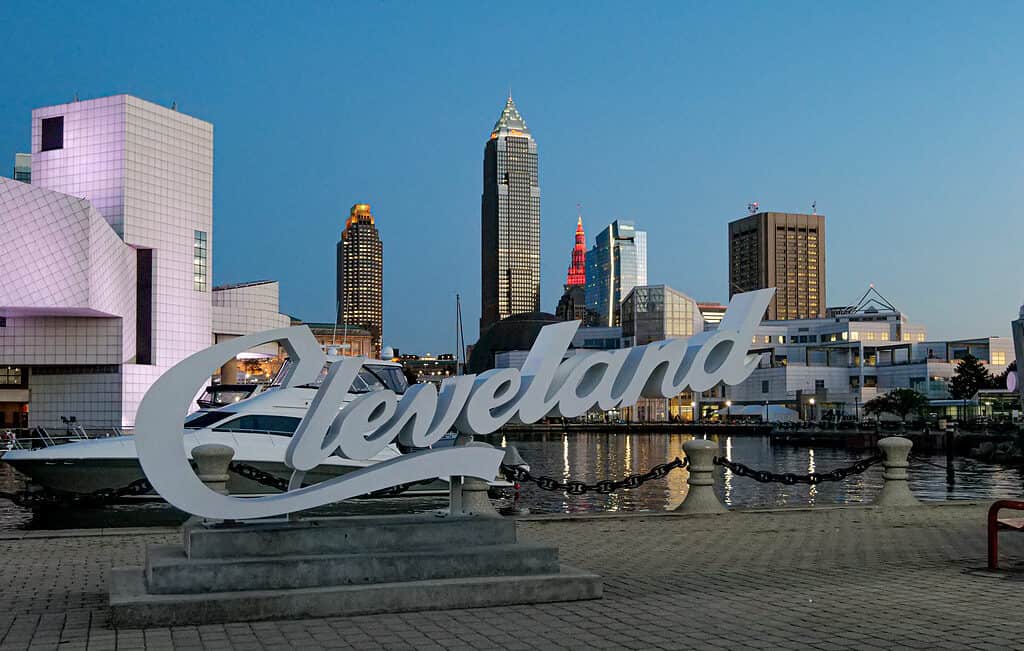
Cleveland is definitely a city that is on its way up!
©iStock.com/Ralph Navarro
6. Dayton, 1796
Israel Ludlow surveyed the land that would become the city of Dayton in 1796. He was also instrumental in plotting out Cincinnati. Dayton was named for New Jersey Revolutionary War veteran and politician Jonathan Dayton. Those early days saw swift growth. By the end of that year, Dayton already had over 40 log cabins and houses.
But the growth would quickly stall out, and Dayton remained quite a small community until the War of 1812. Dayton was strategically located for American troops to launch attacks against the British forces in what was then the northwestern part of the United States.
The following years saw Dayton’s continued upward trajectory. The Ohio & Erie Canal gave Dayton a quick and efficient route to the Ohio River. By the mid-1800s, Dayton was one of Ohio’s wealthiest and fastest-growing communities.
Both agriculture and industry fueled Dayton’s economic growth. Several Dayton companies manufactured farming equipment. And in the 1880s, the National Cash Register Company opened in Dayton.
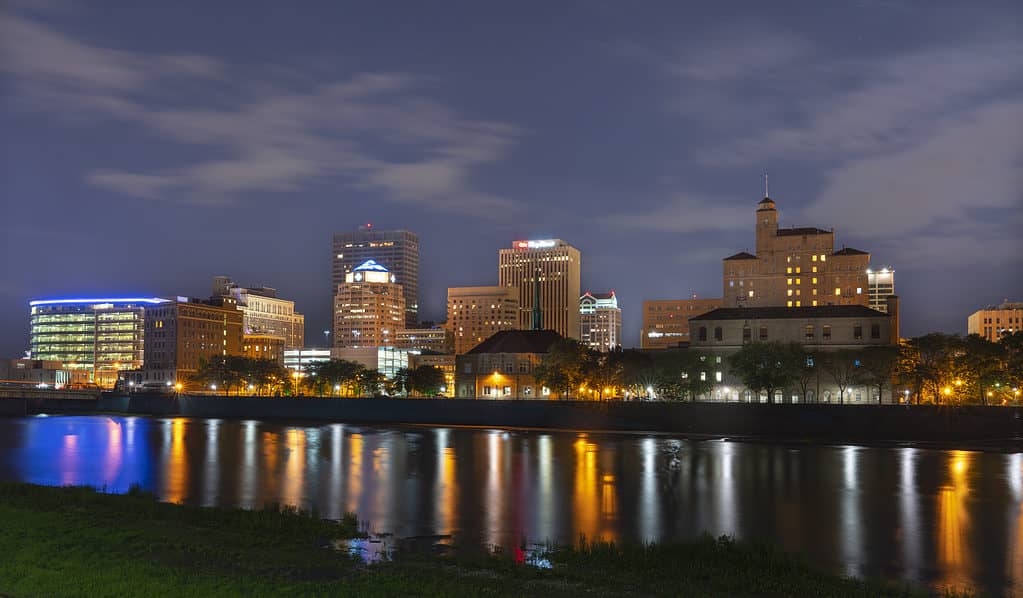
Dayton, Ohio, is situated along the Great Miami River.
©iStock.com/Stephen Wood
Birthplace of Aviation
The 20th century put Dayton directly in the world spotlight as the home of Wilbur and Orville Wright. Their older brother, Wilbur, was born in Indiana, but younger Orville was born in Dayton, where both brothers would grow up. In 1878, Milton Wright gave his two sons a rubber band-powered toy helicopter. Little did he know the spark of ingenuity that he was igniting! Twenty-five years later, on December 17, 1903, the Wright Brothers achieved the first manned airplane flight in Kitty Hawk, North Carolina. But it all began with two boys’ childhood imaginations back in Dayton, Ohio.

Orville Wright continued test flights at Huffman Prairie Dayton, Ohio. This photo is from November 16, 1904.
©Everett Collection/Shutterstock.com
Aviation continues to be central to Dayton’s identity. You can tour the Huffman Prairie Flying Field, where the Wright Brothers continued their flights after returning from North Carolina.
Wright-Patterson Air Force Base is a United States Air Force base and is located just east of Dayton. The National Museum of the U.S. Air Force is just minutes outside the city and features a large collection of aircraft, from the earliest planes of the 20th century to a space shuttle exhibit. You can see a Wright Brothers plane at Carillon Historical Park, which is also just a few minutes from the city’s center. The annual Dayton Air Show is held each summer at the Dayton International Airport and draws over 80,000 visitors every year.
Dayton is the birthplace of aviation, and the city embraces it wholeheartedly. So if your eyes are in the skies (or even if your head is in the clouds), Dayton is a great destination for you!

The annual Dayton Air Show is unrivaled with its display of aircraft and amazing aviation skills, including the United States Air Force Thunderbirds.
©iStock.com/sreenath_k
Summary of the 6 Oldest Cities in Ohio
Here is a list of the six oldest cities in Ohio:
| Rank | City | Year Founded |
|---|---|---|
| 1 | Schoenbrunn | 1772 |
| 2 | Marietta | 1788 |
| 3 | Cincinnati | 1788 |
| 4 | Chillicothe | 1796 |
| 5 | Cleveland | 1796 |
| 6 | Dayton | 1796 |
Honorable Mention
There seems to be a diversity of information about which cities are the oldest, but among them can be included the following:
- Lebanon, 1802; site of the oldest hotel in Ohio, built in 1803, which has hosted 12 presidents.
- Kent, 1805; home of Kent State University.
- Columbus, 1812; state capital and home of Ohio State University.
- Canton, 1815; home of the Pro-Football Hall of Fame and the tomb of President William McKinley.
The photo featured at the top of this post is © iStock.com/gguy44
Thank you for reading! Have some feedback for us? Contact the AZ Animals editorial team.






